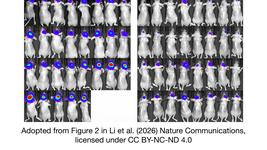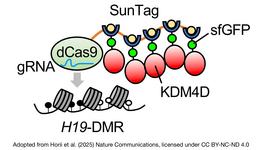TIGER Reporter Mouse Facilitates Evaluation of Genome-Editing Delivery Methods
CMN Intelligence - The World’s Most Comprehensive Intelligence Platform for CRISPR-Genomic Medicine and Gene-Editing Clinical Development
Providing market intelligence, data infrastructure, analytics, and reporting services for the global gene-editing sector. Read more...
In vivo targeted genome editing is being pursued to develop treatments for a broad range of inherited and environmental disorders. However, one of the most significant barriers to clinical translation of genome editing is safe and efficient delivery to disease-relevant tissues.
To address that limitation, researchers at University of California Irvine, Broad Institute, Harvard University and MIT developed a modality-agnostic reporter animal model that facilitates rapid, precise, and quantifiable assessment of functional delivery and editing.
In an open-access article published in PNAS, the team, led by Krzysztof Palczewski, presents and describes the development of the tdTomato in vivo genome-editing reporter (TIGER) mouse (1). TIGER is a reporter strain harbouring an integrated and constitutively expressed mutated tdTomato gene in the Polr2a locus. The mutations (Q115X, Q357X) abolish fluorescence, but fluorescence is restored upon successful adenine base editing (ABE) or prime editing (PE). Unlike previous reporter systems, TIGER enables single-cell resolution assessment across multiple editing modalities without occupying the Rosa26 locus, thus preserving compatibility with other commonly used transgenic mouse lines.
The team reports that TIGER facilitates tissue- and cell type-specific assessment of genome-editing agent delivery across different gene-editing modalities. They demonstrate SaCas9-mediated gene editing in vitro and efficient ABE and PE in vivo using SpCas9-based systems with viral and non-viral delivery vectors targeting four cell types within the mouse eye: the retinal pigment epithelium, photoreceptors, Müller glia, and the trabecular meshwork. They show, via in vivo and ex vivo confocal microscopy, direct editing characterisation in the ocular tissues and verify the spectral and fluorescence lifetime properties of tdTomato reporter in other mouse tissues. They also demonstrate AAV-mediated PE of tissues beyond the eye, including hepatocytes, skeletal muscle, and brain neurons by intravenous injection.
References:
1. Du SW, Palczewska G, Dong Z, Lauterborn JC, Kaipa BR, Yan AL, Hołubowicz R, Ha S, Chen PZ, Gall CM, Zode G, Liu DR, Palczewski K. TIGER: A tdTomato in vivo genome-editing reporter mouse for investigating precision-editor delivery approaches. Proc Natl Acad Sci U S A. 2025 Sep 2;122(35):e2506257122.
To get more CRISPR Medicine News delivered to your inbox, sign up to the free weekly CMN Newsletter here.
Tags
CLINICAL TRIALS
Sponsors:
Base Therapeutics (Shanghai) Co., Ltd.
Sponsors:
Base Therapeutics (Shanghai) Co., Ltd.







